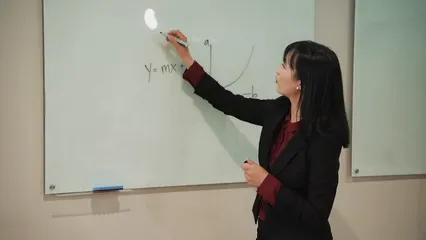
Why Do Bipartite Graphs Have Even Length Cycles?
Introduction
Bipartite graphs are key players in graph theory. They consist of two distinct sets of vertices. Understanding cycles in these graphs is crucial for various applications. This post focuses on why bipartite graphs only have even length cycles.
If you’re eager to dive deeper into the world of graph theory, consider picking up Graph Theory: A Problem-Oriented Approach. This book will equip you with the insights you need to tackle graph-related challenges.
Summary and Overview
A bipartite graph has two sets of vertices, typically labeled U and V. Every edge connects a vertex from set U to one in set V. Notably, there are no edges between vertices of the same set. This structure leads to interesting properties regarding cycle lengths. Specifically, bipartite graphs cannot contain odd-length cycles.
In this article, we will define bipartite graphs and discuss their characteristics. We will also examine the relationship between bipartite graphs and cycle lengths, focusing on the absence of odd cycles. Finally, we will outline proofs and theories that support these ideas.

For those looking to broaden their mathematical knowledge, check out The Complete Works of William Shakespeare. You never know when a little literary inspiration might spark a new idea in your mathematical journey!
Understanding Bipartite Graphs
Definition and Characteristics
A bipartite graph consists of two distinct vertex sets, U and V. Every edge connects a vertex from set U to one in set V. This unique structure results in a property called 2-colorability, where we can color the vertices using two colors without adjacent vertices sharing the same color. This means that vertices within the same set can’t be directly connected.
Another important characteristic is the independent set property, where no two vertices within the same set have edges between them. Because of these properties, bipartite graphs can only contain even-length cycles. If there were any odd-length cycles, it would violate the 2-colorability principle, leading to a contradiction. Thus, understanding these characteristics is essential when examining cycles within bipartite graphs.

If you’re interested in algorithms that play a role in these topics, consider Algorithms for Graph Theory. It’s a great resource for anyone looking to master the intricacies of graph algorithms!
Bipartite graphs can only contain even-length cycles, which is crucial for their properties. why is bipartite graphs have even length cycles
Examples of Bipartite Graphs
Bipartite graphs appear in various real-world scenarios. For instance, in social networks, we can model relationships between users and their interests. Each user belongs to one set, while interests fall into the other. And speaking of social networks, if you’re looking to analyze data from these platforms, consider Social Network Analysis: Methods and Applications. It’s a comprehensive guide that will help you navigate the complexities of social data!

Another example is in scheduling problems, where tasks can be connected to available time slots. Here, tasks form one set, and time slots form the other, ensuring that each task only links to a specific time slot.
A simple illustrative example includes a graph representing students and the courses they enroll in. Students belong to one set, and courses belong to the other. Each edge then signifies a student’s enrollment in a course, showcasing the bipartite nature clearly.
Theoretical Foundations
Theorem: Bipartite Graphs and Odd Cycles
A fundamental theorem in graph theory states that a graph is bipartite if and only if it contains no odd-length cycles. This means that if you can find an odd-length cycle in a graph, it cannot be bipartite. The implications of this theorem are significant. It helps us understand the structure of bipartite graphs and their properties. When we know a graph is bipartite, we can confidently assert that all cycles must be even in length. This characteristic makes bipartite graphs useful in various applications, such as scheduling and matching problems in computer science and optimization.

To further enhance your understanding of mathematics, consider exploring Mathematics for Computer Science. It’s an excellent resource for anyone looking to bridge the gap between mathematics and programming.
Proof of the Theorem
Forward Direction: Bipartite Implies Even Cycles
To prove that all closed walks in a bipartite graph must be of even length, we start by recalling the definition of a bipartite graph. It consists of two sets of vertices, U and V, with edges only between these sets.
- Choose any vertex v0 from set U.
- As you traverse the graph, each step alternates between vertices in U and V.
- If you start at v0, the first edge leads to a vertex in V, the next to a vertex in U, and so forth.
- When returning to v0, you must have made an even number of steps.
This is because each step switches between the two sets, meaning the total number of edges traversed must be even to return to the starting point. Thus, all closed walks in a bipartite graph are of even length. This conclusion reinforces the understanding that bipartite graphs cannot contain odd-length cycles, establishing a clear relationship between bipartiteness and cycle length.

Reverse Direction: Even Cycles Imply Bipartite
To understand the reverse direction, we need to prove that if a graph contains only even-length cycles, it must be bipartite. Let’s break this down step by step.
First, consider a graph G where all cycles have even lengths. Choose any vertex v0 from the graph. We can define a method to color the vertices based on their distance from v0. Assign one color to vertices at even distances and another color to those at odd distances.
Now, let’s analyze two vertices u and w that are connected by an edge. If they are both at even distances from v0, then the path from v0 to u and back to w creates a closed walk of odd length. This contradicts our initial assumption that all cycles are even.
The same reasoning applies if both vertices are at odd distances.
Therefore, edges can only connect vertices of different colors. This means the graph can be divided into two distinct sets, confirming that G is bipartite.
To illustrate, think of a simple cycle. If you have a cycle of length four, you can color the vertices alternately. For cycles of length six, the same coloring method applies. This demonstrates that as long as all cycles remain even, the bipartite nature holds true.
In summary, if a graph has only even-length cycles, it confirms the bipartite structure. This insight is essential in graph theory, reinforcing the connection between cycle lengths and graph properties.
Practical Implications
Applications of Bipartite Graphs
Bipartite graphs play a significant role across various fields. In computer science, they are essential for matching algorithms, such as those used in job assignments. Each worker can be matched to specific tasks based on skills, creating efficient workflows.
In biology, bipartite graphs help model relationships, such as predator-prey interactions. Here, one set represents predators, while the other represents prey species. Understanding these dynamics can aid in ecological studies.

If you’re keen on understanding the algorithms behind these applications, grab a copy of Data Structures and Algorithms Made Easy. It’s a must-read for anyone looking to excel in algorithm design!
Social sciences also leverage bipartite graphs. They model relationships between individuals and their interests or affiliations. For instance, in a social network, one set could represent users, while the other represents different activities or groups.
The presence of even-length cycles in bipartite graphs is crucial. It ensures that the relationships modeled remain consistent and valid. This characteristic allows researchers to draw reliable conclusions from the data represented by these graphs.

Algorithms Related to Bipartite Graphs
Testing whether a graph is bipartite is crucial in many fields. Two common algorithms for this are Breadth-First Search (BFS) and Depth-First Search (DFS). Both methods help determine if we can split the graph into two sets without two vertices in the same set being connected.
Using BFS, we start from a vertex and assign it a color. Then we color its neighbors with a different color. This process continues until all vertices are colored. If we find a vertex with the same color as one of its neighbors, the graph is not bipartite.
DFS operates similarly, exploring as far down a branch as possible before backtracking. It also colors vertices to ensure no two adjacent nodes share the same color.

These algorithms are not just theoretical. They have practical applications, such as in scheduling problems, where tasks must be assigned without conflicts. For instance, workers can be assigned to shifts based on available time slots, ensuring no overlap in scheduling. This efficiency is invaluable in optimizing workflows and resource management. To get a better grasp on scheduling algorithms, you might want to check out The Art of Computer Programming, Volume 1. It’s a classic that every programmer should have on their shelf!
Conclusion
Bipartite graphs are fascinating due to their unique property of containing only even-length cycles. This characteristic is tied to their structure, where vertices can be divided into two distinct sets. Understanding this concept enhances our grasp of graph theory and its numerous applications. From scheduling tasks to analyzing social networks, bipartite graphs play a significant role in providing solutions to real-world problems. Embracing these ideas can lead to more efficient algorithms and better decision-making in various fields. If you’re looking to explore more about graph theory, a great read is Graph Theory for Dummies. It’s a fun and accessible way to dive deeper into this subject!

FAQs
What is a bipartite graph?
A bipartite graph is a type of graph where the vertices can be divided into two separate sets. Each edge connects a vertex from one set to a vertex from the other. No edges exist between vertices within the same set.
Why do bipartite graphs not contain odd-length cycles?
Bipartite graphs cannot have odd-length cycles due to their nature. When traversing a bipartite graph, vertices alternate between the two sets. An odd-length cycle would require returning to the starting point while violating this alternation.
How can you determine if a graph is bipartite?
You can determine if a graph is bipartite by using BFS or DFS. These algorithms color the graph’s vertices. If any two connected vertices share the same color, the graph is not bipartite.
What are some real-world applications of bipartite graphs?
Bipartite graphs are used in various scenarios, such as modeling relationships in social networks, solving matching problems, and optimizing scheduling tasks in workplaces.
Can a bipartite graph have cycles of odd length?
No, a bipartite graph cannot have odd-length cycles. This is a defining property of bipartite graphs, reinforcing their unique structure and applications in graph theory.
Please let us know what you think about our content by leaving a comment down below!
Thank you for reading till here 🙂
All images from Pexels




